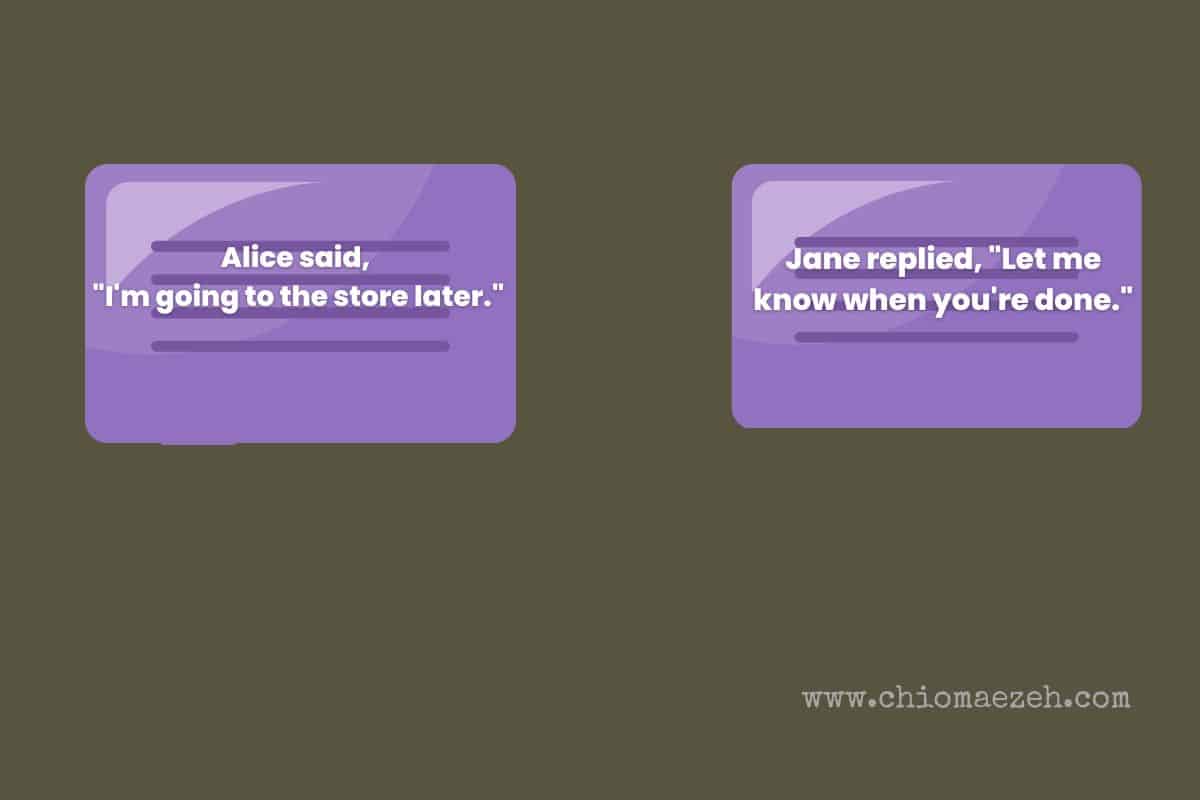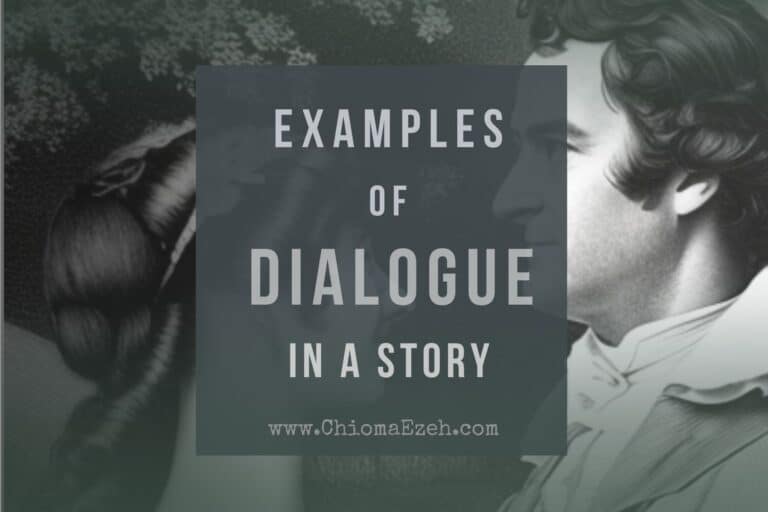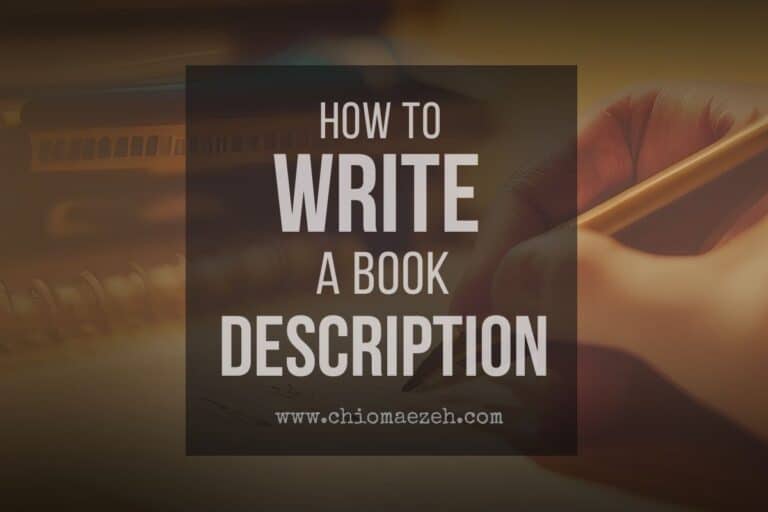What Are The 9 Rules Of Dialogue Writing?
Dialogue is essential to a story. It brings characters to life and moves the plot forward. While dialogue may seem simple on the surface, making it feel natural and engaging can be challenging.
To help you master the art of writing dialogue, this article will explore the rules of dialogue writing you should follow so your characters’ conversations are both believable and compelling.
👉See our overview guide to writing dialogue for authors

Let’s Talk
Are you a writer aspiring to pen a masterpiece that never fails to captivate? Look no further. Reach out to us and uncover how we can help you to take your writing to unprecedented heights!

What are the rules of dialogue Punctuation?
To be clear, the dialogue punctuation rules are a bit more streamlined than the general rules of dialogue writing (which we will get into in a moment). If you’re looking for dialogue punctuation rules, read this article.
However, here is a snippet of the rules of dialogue punctuation:
- Use quotation marks to enclose spoken words or dialogue.
- Commas, periods, question marks, and exclamation marks should be placed inside the quotation marks.
- Dialogue tags, such as “he said” or “she asked,” should be separated from the dialogue quote using commas.
- Capitalize the first word of dialogue, regardless of its position in a sentence.
- Start a new paragraph every time the speaker changes.
- Use ellipses (…) to indicate trailing off or pausing in dialogue.
👉 To learn more, head over to our post on 10 rules of dialogue punctuation for authors
What Are The Basic Rules Of Dialogue Writing?
When writing dialogues between characters, you should remember the following rules. These rules will help you create authentic conversations that move your plot forward and reveal your characters’ personalities:
1. Use quotation marks:
Enclose dialogue in double quotation marks to distinguish dialogue from the rest of the text. This indicates to the reader that a character is speaking.
Example:
“Did you finish the report?” she asked.
2. Separate the speakers:
Begin a new paragraph for each speaker, which helps readers track who is speaking. This is crucial for maintaining clarity and understanding throughout a conversation.
Example:
“I can’t find my keys,” Tom said.
“Did you check the kitchen counter?” Mary replied.
3. Indent each paragraph:
Dialogue paragraphs should be indented like any other paragraph in your text. This visually separates each paragraph, making your story easier to read.
4. No end quotations for long speeches with multiple paragraphs:
When a character speaks for an extended period, their dialogue may span multiple paragraphs. In this case, omit the closing quotation marks at the end of each paragraph and add them at the beginning of the next paragraph to indicate that the character is still speaking.
Example:
“I’ve been thinking about what you said,” he began. “And I realized that you’re right. I need to make some changes in my life.
“But that’s not going to happen overnight. I’ll need your support and understanding as I work through this process.”
5. Skip unnecessary small talk:
Focus on conveying only the essential information. While small talk can lend realism to your dialogue, too much of it can make your writing feel artificial and inauthentic.
Example:
Instead of: “Hi, how are you?” “I’m good, thanks. How about you?” “Fine, thanks.”
Use: “Hey, did you hear about the big news?”
6. Use punctuation:
Place commas and periods inside the quotation marks, while question marks and exclamation points may be placed inside or outside depending on the context.
Example:
“Can I join you?” she asked.
“I don’t know,” he replied.
7. Use dialogue tags sparingly:
Use actions or descriptions to indicate who is speaking instead of overusing dialogue tags such as “he said” or “she replied.”
Example:
Alice rolled her eyes. “You can’t be serious.”
Bob just grinned. “Oh, I’m very serious.”
👉Check out our list of 700+ Dialogue tags and action beats
8. Be realistic:
Dialogue should sound natural, with realistic pauses, interruptions, and tone shifts. Listen to real-life conversations and observe how people speak to make your dialogue more authentic.
Example:
“I mean, I don’t know, it’s just… I can’t explain it,” she stuttered.
9. Utilize subtext:
Subtext is crucial, as what characters don’t say can be just as important as what they do say. Convey underlying meanings and emotions through their words and actions.
Example:
“I’m fine,” she said, avoiding his gaze. The tightness in her voice betrayed her true feelings.
With these dialogue rules, you can create engaging, authentic, and revealing conversations that allow your characters and story to come to life.
👉See our tips on how to write subtexts in dialogue
Video Recommendation: Rules Of Dialogue Writing
FAQs on Rules Of Dialogue Writing
Should Dialogue Writing Have Rules?
While creativity is crucial when writing dialogue, having some guidelines can help ensure that your conversations flow smoothly and are easily understood by your readers. These rules create a solid foundation for your dialogue, allowing your characters’ voices to shine and effectively convey their emotions, motives, and personalities.
How Do I Write Dialogue For Multiple Characters In A Scene?
When writing dialogue for multiple characters, start a new paragraph for each speaker, and consider using actions or descriptions to help readers understand who is speaking.
How Can I Make My Dialogue Sound More Realistic?
To make your dialogue sound more realistic, listen to real-life conversations, and pay attention to the natural rhythm, tone, and word choice.
Should I Use Dialect Or Accents In My Dialogue?
Using dialects or accents can add authenticity to your story but should be done sparingly to avoid confusing or alienating readers.


![What Is Writing? [Definition, History, Types, Utensils, Examples]](https://chiomaezeh.com/wp-content/uploads/2023/03/what-is-writing-1-768x512.jpg)
![5 Easy Ways To Write Dialogue For A Novel [Template + Example]](https://chiomaezeh.com/wp-content/uploads/2023/03/how-to-write-dialogue-for-a-book-2-768x512.jpg)
![What is Dialogue in a Story? [Meaning, Types, Examples]](https://chiomaezeh.com/wp-content/uploads/2023/03/dialogue-in-a-story-1-768x512.jpg)

